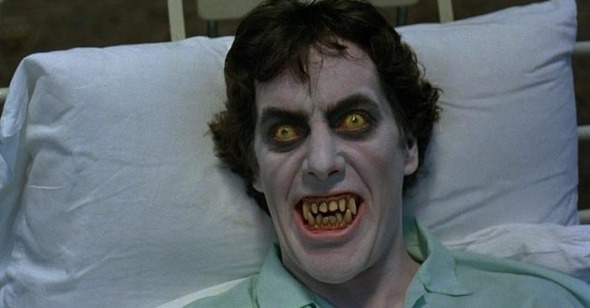First Night:
An American Werewolf in London
Usually at this time of the year, we launch our annual “Great Pumpkins” Halloween-week series with something like a state-of-the-art assessment of the horror film. For 2008 we’re hard-pressed to find anything worthwhile to say. Though this week we’ve had a pair of more than watchable European fright flicks (Let the Right One In, Fear(s) of the Dark), hushed Swedish vampire tweens and spooky French ‘toons are hardly reflective of any genre movement. As for American cinema, 2008’s been a horror wasteland thus far: Watch People Get Mutilated in Cheesy Fast-Motion While the Camera Whips Around Them Pointlessly Part V may be opening this week, and Quarantine seems to have a handful of admirers, but quality chills have been few and far between. Back at the beginning of the summer, Bryan Bertino’s The Strangers raised a few hairs this side of the Atlantic, yet despite an effective set-up I not only found it enervatingly one-note and distasteful in its claims to doomed romance, but also often spatially incoherent and dully repetitive. Like Cloverfield, its “mercilessly single-minded” narrative is actually a front for dull nihilism. Both films had me wondering, “Why am I watching this?” from nearly first frame to last. Horror films should disturb, but I don’t want to resent the experience. (Related: Anyone remember The Ruins? Thought not.)
We knew from last year that the torture-porn bubble had burst (quick, someone tell the hilariously, appropriately named David Hackl), but this year studios and distributors seemed mostly uninterested in any kind of horror at all. (Kudos to Magnolia’s low-budget digi arm Magnet for putting out Splinter next week, which seems like an efficient little monster machine, judging from the first two-thirds of it I saw from my warped screener.)
This year, for my first pumpkin, I rewatched an old chestnut, and I’ll be damned if it didn’t reveal nearly everything that’s missing in horror today. John Landis’s An American Werewolf in London has a reputation as a horror-comedy, a dubious category that would soon be replaced by the broader Ghostbusters template (chuckles more important than scares) and which now has been taken over by the cheap sub–Hot Shots drek in the Scary Movie franchise. Yet while Landis’s film is certainly noticeably tongue-in-cheek, its occasional laughs are not intended to deflate or detract from the horror. Miraculously, the chuckles and the shocks stand side by side proudly; Landis, here just coming off of Animal House, proves himself a true showman: he’s one of the few filmmakers who has taken to heart both sides of that “Screaming/Laughing” equation put forth by film theorist and critic William Paul. The visions of grime and gore in American Werewolf are memorably sobering, and the frattish jokiness that surrounds them only serves to heighten a sense of uncanniness and dread. This is a world askew, and gallows humor can hold death and dismemberment at bay for just so long.
A great deal of the film’s success can be attributed to the gentle, unforced jocularity of David Naughton and Griffin Dunne as college-age backpackers hoofing it through Europe, whose bad decision to stay off the main roads on the windswept, rainy Yorkshire moors leads the latter to be torn apart by an angry beast and the former to be infected with a particularly lupine disease. Dunne’s constant reappearance as a chastising, cranky spook (whose hanging, pulpy flesh has Naughton likening him to a “talking meatloaf”) imploring David to kill himself before the next full moon, barely defuses the mounting tension, which reaches a head upon the first, appropriately lauded, transformation. Genuinely frightening even while it presages Buffy and Kevin Williamson-era know-it-all (there’s much eye-rolling over the recitation of creature-feature lore), Landis’s film injects humor only when necessary, stopping the film dead for a joke only once, with some goofy, Poirot-esque bumbling detective business. There’s a “cleverness” to portions of the film (especially in the first half, with a tricky series of horrifying, surreal nightmares within nightmares) that go beyond gimmickiness and enter the realm of the truly unsettling. And though Dunne’s sarcasm has been greatly appreciated over the years, proper credit must go to Naughton’s casual, everyguy sexiness; halfway between nebbish Jew and dreamy high-school jock, he’s a yankee in King Arthur’s court just relatable enough to care about but whose ultimately tragic plight thankfully never registers as more than a very sick joke.
Of course, no discussion of An American Werewolf in London is complete without remarking upon Rick Baker’s incredible makeup effects and the requisite mourning over the lost art of prosthetics in the face of overreliance on CGI bombastics (see the unfortunate An American Werewolf in Paris for evidence on how not to employ such visuals…that film’s monster looks like it absconded from Sega’s Altered Beast). But let’s face it, this shit still looks amazing, and yes, we it may sound rote, but let’s have another moment of silence for the early Eighties heyday of special effects (between this, The Thing, Michael Jackson’s Thriller, and Poltergeist, a case could have been made for just ending the creature-feature dead in its tracks by 1983). When Naughton doubles over in agonizing pain, shrieking as his body contorts and expands, as thick black hairs push through his tender skin like bristly daggers, and his face warps into a fanged demon mask, the realization settles in for the viewer that all this tactility would probably be foregone now for a quick digi-fix. But why lament? Just rent An American Werewolf in London; it growls and chortles still. —Michael Koresky
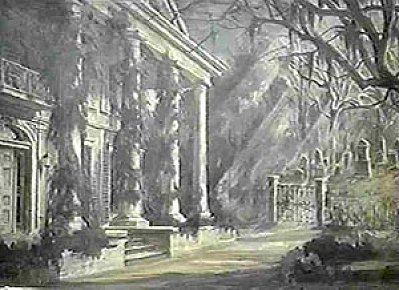
Second Night:
Night Gallery: "The Cemetery"
The first episode of Night Gallery, Rod Serling’s post–Twilight Zone cult favorite (and for some, punching bag) perhaps best incorporated the show’s unifying “hall of portraits” motif into its actual narrative. As many forever haunted children recall (both from its original run and subsequent reruns on cable), every week Serling’s show, which originally aired from 1970-73, began with a plummet through a shadowy, animated cavern of paintings, one of which Our Gentleman of Eternal Clenched Jaw would single out as representative of the episode we were about to watch. Serling didn’t write every episode of Night Gallery, but many of those other tales were adapted from such horror stalwarts as Lovecraft, Richard Matheson, and Algernon Blackwood. Of course, Serling’s O’Henry-Gone-Grim installments were always the most welcome, and for my money the best showcases for his trademark dark irony were the three episodes that began the series, lumped together then and now (on DVD) as the pilot “movie.”
Each of the proceeding episodes in the pilot are more than worth a shout-out: Steven Spielberg’s “Eyes,” with Joan Crawford as a blind rich bitch who temporarily regains her site during a blackout, centers on one of the most delicious and cruel twists of Serling’s career, and “The Escape Route,” in which Richard Kiley’s German war criminal in South America wishes himself into a museum painting to elude Nazi hunters, only to find that it’s the…wrong….painting, screwed me up so badly as a child that I don’t even want to go near it at the moment. So I’ve chosen to focus on the more traditionally Halloween-y opener, a chilling bit of supernatural fear-stoking that I’ve never been able to truly shake. Even with an enjoyably fey Roddy McDowall as a selfish dandy and Ossie Davis as a bitter butler, “The Cemetery” elicits more shivers than chuckles, an impressive feat.
This first episode of Night Gallery is essentially a back-from-the-dead revenge narrative, except that all of the supernatural interference takes place on one painted canvas. After greedy Roddy purposely hurries his sick, rich uncle’s death so that he can claim his fortune and move into his mansion, he finds himself beset by the old man’s angry spirit, or at least the image of him, rising from the graveyard next to the house in the likeness of the mansion hanging on the wall next to the main-hall staircase. Yet the painting doesn’t move before his eyes; rather it alters slightly every time Roddy takes a peek at it, the risen ghost getting closer and closer to the front door, until…there’s a knock…
The fears here are elemental, and the tactics effectively subtle: recalling everything from Oscar Wilde’s The Picture of Dorian Gray to W.W. Jacobs’s “The Monkey’s Paw” to M.R. James’s “The Mezzotint,” Serling’s “The Cemetery” was not merely the beginning of Serling’s masterful final act but an elegantly composed work of short horror (more of those to come here at Reverse Shot this week). Even if it ultimately builds to one of the writer’s less convincing twists, this is one of TV’s all-time creepiest half-hours. —MK
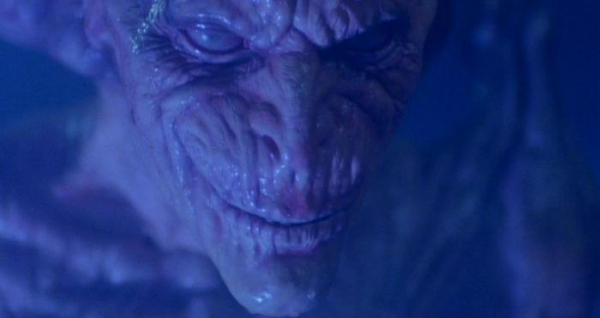
Third Night:
Pumpkinhead
"But you cant [sic] be alive forever, and you always wear out life long before you have exhausted the possibilities of living. And all that must be somewhere; all that could not have been invented and created just to be thrown away. And the earth is shallow; there is not a great deal of it before you come to the rock. And the earth dont [sic] want to just keep things, hoard them; it wants to use them again.” —William Faulkner, Go Down, Moses
William Faulkner thought enough of ghost stories to tell them to his children at Rowan Oak throughout his life. His ghosts were salt of the earth. Faulkner believed in reason and fairness, and ghosts were part of that great democracy because the past was a part of it, too. No present without a past; no future without a past.
Horror is, to my mind, best in America. In America we believe in ghosts, and these specters are not monster men made by science, or Old World legends of ghoulish kings. Stateside ghosts reside quietly at the periphery of civilization, without lords or gothic manors to haunt in baronial splendor. These spirits are a part of the far country: the distant valleys, lost coves, and dark hills of the westward-cursed continent. It is possible to chart the whole terrain of this phantasmagorical United States in movies: south from New England in The Legend of Sleepy Hollow to the bayous of Strangler of the Swamp and The Beyond; west to the great Halloween sequence in Meet Me in St. Louis and the New Mexico of The Leopard Man; north to California in The Fog and to Washington in Twin Peaks. In between are hundreds of supernatural tales— sad stories, most often, of heartbroken souls. Appalachia is little else, buried alive in tall, hollow hills, full of mournful laments and deep anger.
Stan Winston, one of the best-known makeup technicians in film history, made his directorial debut in 1988 with Pumpkinhead, a cruel, slight, and enjoyable parable about the ruinous nature of revenge, set somewhere at the edge of the woods in Kentucky, West Virginia, or Tennessee, where star Lance Henriksen lives alone with his son. The kid is cute, wears glasses, and Henriksen loves him a lot. Together they run a country store that supplies the locals with feed and highway passers-through with cold drinks. The store is the medium between two worlds: backwoods and the rest of the country. Winston doesn’t waste any time bringing an overall-clad, unwashed group of kids down from the mountain to ask Henriksen about an order for their dad, just as two carloads of antagonistic teenagers arrive from the city to buy beer, race dirt bikes, and argue about the criminal inclinations of a blockhead older brother. The two mobs mingle and even get along; it’s clear, at least, that one of the out-of-town girls inspires a crush in the oldest local boy.
What follows isn’t the Us vs. Them round robin Winston’s setup anticipates, but the death of Henriksen’s son in a negligent but honest accident. Henriksen sees it differently, and retreats into the hills with the body of his child to call down a demon from an ageless witch to extract immortal restitution from the careless teens in torturous episodes of homicidal rage. Few people are spared, no one is brought back, and the closest Pumpkinhead gets to a hero is one love-struck kid with one selfless moment that barely even slows the tide.
Surprisingly enough, it’s the creature itself that Winston never really sells. An ungainly mash-up of countless alien dogs and werewolf mutations before it, Pumpkinhead is a depressingly anonymous makeup job, even as it adopts Henriksen’s face as its own. But what works is its mission: summoned from beyond to avenge its bringer, ruthless in its methods and exact with its numbers. Only another sacrifice can stop it, but if there is a lesson buried in coal miners’ mountains, it’s that everything is cyclical, that sacrifice means nothing, and that everyone you count on will eventually let you down.
Heavier stuff than the folktale suggests, but that is the character of the land. Winston does it justice with a second cemetery in the woods, far past the mountain families’ graveyard. Even in death, there are always secrets, and Pumpkinhead’s blue-filtered, fog-filled burial plots for the damned could very possibly hold them all until Judgment Day. —Nathan Kosub
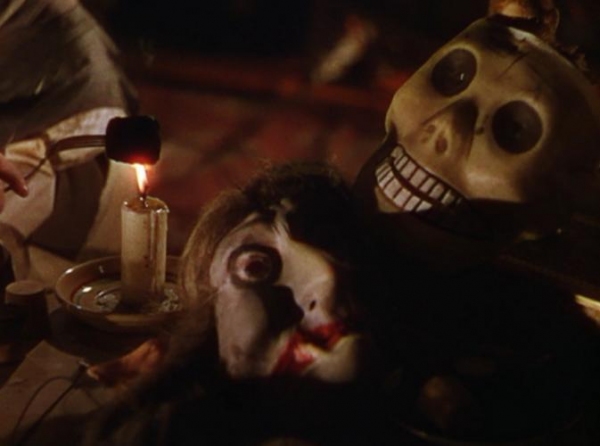
Fourth Night:
Meet Me in St. Louis
Not every Great Pumpkin has to be horror. Arguably Vincente Minnelli’s best film (inarguably, though, to my mind), Meet Me in St. Louis, that big old slab of female-centric Americana, contains perhaps the century’s greatest cinematic evocation of Halloween, outpacing even John Carpenter’s sharp visualization of that most dreaded suburban twilight thirty-four years later. Throughout all the changing seasons of Meet Me in St. Louis, Minnelli is revealing the possibly false idyll of his turn-of-the-century Missouri suburb setting (cutie-pie tots obsessed with death and dismemberment; a Christmas overshadowed by sorrow and fear), but it’s during Halloween that, with just the slightest tweaks, Minnelli transforms his blissful neighborhood into a surreal nighttime.
There is much incident during Meet Me in St. Louis‘s Halloween chapter: Margaret O’Brien’s fibbing scamp Tootie claims that handsome “boy next door” John Truitt “tried to kill me,” which causes Judy Garland’s Esther to retaliate by slugging John without mercy, a demonstration made nearly tragic due to the fact that Esther has a burning crush on him; furthermore, the family’s enjoyment of a Halloween cake is interrupted by father Lon’s devastating news that they will have to pack and move to New York in just a few months due to a job offer. Yet before any of this takes place, Minnelli puts Tootie and second-youngest Agnes through a bit of shockingly mean-spirited Halloween hi-jinks. Long gone are the catchy ditties and sun-dappled playfulness that marked the film’s first hour, replaced by compositions of rich, black night and raging bonfires.
The kids are not alright: Meet Me in St. Louis excavates a time in American history in which Halloween’s paganism hadn’t yet been replaced by the relatively safe, child-friendly traditions of trick-or-treating. New to the United States in the late 19th-century with the influx of Irish immigrants, All Hallows’ Eve had become, at the time of the film’s setting, 1903, little more than an excuse for vandalism. Cloaked as devils and spirits of the underworld (plus one busty, mustachioed broad courtesy of top-notch kid actor Darryl Hickman), the tykes in Meet Me in St. Louis wreak havoc, smashing furniture in a bonfire in the middle of their heretofore quiet street, and throwing handfuls of flour into the faces of supposedly bad-tempered neighbors.
And Minnelli captures it all with customary verve. Crisp autumn blowing leaves, jack-o-lanterns glaring from upstairs windows, and creepy costumes framed against a velvety black night sky: this is probably the most ghoulishly fun Halloween ever captured on film. And even though Minnelli doesn’t go for the full fright or perform any sort of supernatural intervention, he accomplishes what’s most important: he creates an unnerving setting in which it seems like anything can happen. Kind of like Halloween itself. —MK
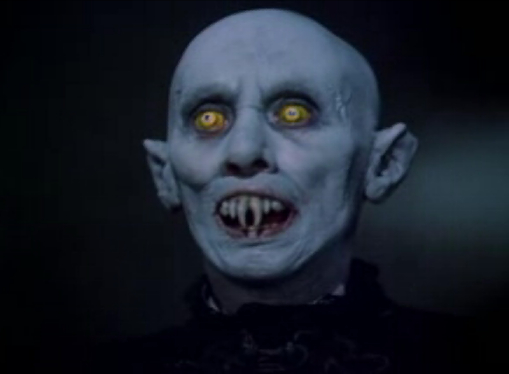
Fifth Night:
Salem's Lot
Call this one: Tribute to a Face. This veiny blue monstrosity, the icon of Tobe Hooper’s TV adaptation of Stephen King’s best-seller Salem's Lot, took the Max Schreck template from Murnau’s Nosferatu to its hideous endpoint. Crooked fangs, desiccated features, dead marble eyes. Pushing the boundaries of the term “human,” this horrifying creation, embodied by actor Reggie Nalder, remains the most truly upsetting incarnation of the vampire ever created for the screen. And there he was, in 1978, in everyone’s living room.
Or maybe this entry in the Great Pumpkins series is more a tribute to the power of television to instill fear in the viewer. Is it because we least expect it? Is it because we get caught off guard, while sitting, presumably safely, nestled in our chairs? Nearly all of the terrifying experiences I can recall from childhood were necessarily from network or UHF channels: these came not just from airings of theatrical films (though my first experiences with The Shining and Psycho arrived with commercial interruption, and for some reason that heightened the tension for me. How could something so emotionally disruptive come packaged with something so mundane as toothpaste and car ads?) but also from reruns of old television shows—The Twilight Zone, Night Gallery, and, perhaps worst of all, that one terrible Alfred Hitchcock Presents episode about the female convict who attempts to break out of prison by stowing away in a casket . . . bad idea.
But Salem’s Lot was maybe worst of all. And it mostly had to do with that face. In my household the story is apocryphal: a year before my birth, my mother was nonchalantly folding laundry while Tobe Hooper’s hyped miniseries was glowing from the television in front of her. The creepy, but rather placid story was about an hour in. Horror visuals had been mostly relegated to some fog-enshrouded floating undead and cobwebby houses. But there had been talk of an absent “Mr. Barlow.” And when he finally arrived, awaking a man in the shadows of a dingy jail cell, he certainly didn’t disappoint. My mother’s reaction, a blood-curdling scream to an empty house and a true momentary fear that a heart-attack might have been induced, followed by an abrupt turning off of the TV, remains as vivid an image in my head as anything in the film itself. (If you feel the sick need to watch this very scene, YouTube has made it handily available. But you really don’t have to…) Even some years later, when I went through my supposedly fearless “horror movie phase,” I would have to cover up the images of Mr. Barlow that graced the front and interior of my Stephen King Goes to the Movies fan-book.
Congrats to Mr. Hooper for so consistently decimating my childhood, making it nearly impossible to turn the lights out without thinking twice (between this, Texas Chainsaw Massacre, and Poltergeist, it’s hard to believe that anyone could proclaim Wes Craven a superior horror craftsman and keep a straight face). As for the rest of Salem’s Lot? Elegant, eerie, sometimes dull, sturdy, an always welcome James Mason. But who remembers any of that, when that face is there, lurking around the corner, waiting to pop out of some thick black shadows?—MK
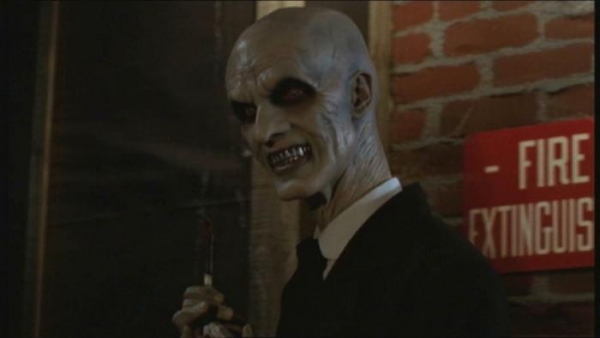
Sixth Night:
Buffy the Vampire Slayer: "Hush"
As we close in on the big day, a theme emerges: perhaps this is the year of the Television Great Pumpkin. This is fitting, since the original Peanuts special itself was and will always be a television event. I am also inclined to agree with Robbie that there’s something special about the experience of watching a scary movie or TV show while tucked under a blanket in the darkness of one’s living room, something invasively terrifying. But television tends to get dismissed as a writer’s art—to call something televisual normally means it’s bereft of visual imagination or directorial flourishes. The description is hardly commensurate with what we’ve come to expect of great horror.
It is also fitting, then, that today’s Pumpkin largely dispenses with dialogue. “Hush,” the much-heralded “silent” episode from the fourth season of Buffy the Vampire Slayer, has a deliciously macabre premise: a group of bald, floating fairy-tale demons named the Gentlemen steal all the voices of Sunnydale’s inhabitants and begin collecting seven human hearts with a scalpel, one victim at a time. It’s as though writer-director Joss Whedon, who created the series, tapped directly into one of my own recurring nightmares that invariably culminates with an inexplicable inability to scream in a moment of crisis. Stalked by an otherworldly menace, the Gentlemen’s victims open their mouths and then…nothing comes out. In the whole episode, we see only one victim meet his demise, an adorably wholesome college student tucked away in his flannel pajamas, and it’s both desperate and chilling.
As is typical for Buffy, the horror in “Hush” isn’t simply elemental; it’s also existential and metaphoric. Whedon gives us plenty of visceral frights, as the Gentleman float unexpectedly past a window or emerge from a dorm room with a fresh heart in hand. Between the scares, though, Buffy (Sarah Michelle Gellar) and her friend Willow (Alyson Hannigan) walk through the streets of Sunnydale surrounded by the town’s inhabitants, who are paralyzed and demoralized by the deadening silence. At the same time, Whedon uses the supernatural to comment upon the emotional lives of his characters. As “Hush” opens, Buffy is at the beginning of a serious romance. Hesitant, she self-sabotages, filling pregnant silences and halting his near-kisses with words. The meaning is clear: sometimes talking gets in the way of communication and connection, but if you stop talking and start feeling, you risk getting your heart, well, ripped out. All of Buffy’s principals find themselves in nascent romances that get pushed along by the wordless action in “Hush,” which strikes a clever balance between the sickly and the sweet.
Whedon has earned a reputation as a genre-bender, and at times, “Hush” plays as horror, comedy, and twisted romance. As Whedon shifts from genre to genre, however, he always keeps his feet firmly planted, and in the episode’s horror moments, he demonstrates a complete command of the genre. The Gentlemen, for example, are truly magnificent creations – garish, and insidiously polite, portraits of hideous menace dressed in tidy black suits. Through inspired character design and an expert use of point-of-view and multiple planes of action, the Gentlemen become one of the show’s most enduring creations. At first, they seem an insurmountable set of foes; no sword can kill them, we are told. They can only be vanquished by the sound of a female voice. So “Hush” climaxes, like much horror, with a female scream. But this is Buffy the Vampire Slayer, a show that always turned the horror genre on its head to prove its feminist point. So it is fitting that “Hush” ends, not with the cry of a victim, but with the yelp of a warrior. —Chris Wisniewski
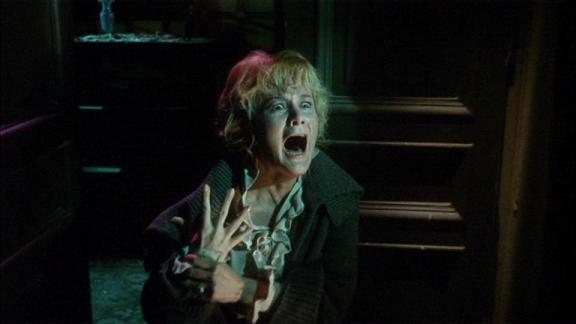
Seventh Night:
The Drop of Water
It seems that the unofficial theme of this week’s Halloween post has been that of the power of the human face to frighten. Whether painted or real, covered in makeup or simply contorted in expression, the face, the key to identity, that which can reassure but which so often alienates, can be exploited and manipulated to brilliant effect. My most fearfully recollected nightmare from childhood was a simple one: a demon, hollow and intense, staring at me through my bedroom window during a rainstorm, his face only illuminated with each bolt of lightning. The stranger never entered my room, but the terror of being watched, of feeling his intent, was forever etched on me. Many other childhood nightmares (of the huge parent-eating monster in the forest; of the writhing, squealing worm buried under my delicious pancake) have fallen away, but that face, immovable, betraying nothing, remains.
This week, we’ve had a particularly nasty gallery of grotesques. But in addition to those we’ve cited (Mr. Barlow, American werewolves, the Gentlemen, Pumpkinhead), many others linger in the memory, from the terrible monstrous aged picture of Dorian Gray in Albert Lewin’s 1945 version to Donald Sutherland’s final, eye-bulging screech in Invasion of the Body Snatchers. To finish off this week’s parade of ghouls, I turn to a piece of classic short horror predicated almost entirely on one horrific expression, frozen in time.
During a short-lived Mario Bava binge some years back, I rented the Italian horror master’s trilogy Black Sabbath. Knowing that most horror anthologies tend to save the best for last (from Spirits of the Dead‘s Toby Dammit to this year’s Fear(s) of the Dark, which concludes with a deliriously inventive bit of animated haunted house expressionism), I soldiered through the first two segments, one a proto-giallo bore about a phone stalker and the next a creaky but minorly effective beast-in-the-snow melodrama. When I finally got to the third, innocuously entitled “The Drop of Water,” it was very late at night, perhaps after 2 or even 3 a.m. The hypnotic, purely visual film to follow crept around me like tendrils, and its money shot (of a terrible face, revealed early and often) ground me to a pulp.
Based loosely upon Poe’s “The Telltale Heart” but also tapping into that oft-trotted out campfire tale chestnut in which the dead comes back to reclaim a stolen property or even body part (“Give me back my toe!”), Bava’s short concerns a fortune teller who steals an expensive ring off of a client’s fresh corpse. The old woman had died, her eyes wide open, her skeletal face withered, her lips peeled back over her gnarled teeth. Of course she comes back to reclaim her possession, looking much like she did at the moment of death. And Bava uses no dialogue to greet her reappearance, only the titular sound of water.
Gorgeously composed reds and blues highlight Bava’s unsurprisingly expert mise-en-scène, but this is, in a sense, a one-woman-show. I have chosen not to show the unsettling face in question here, as I have in recent postings, because it would be unfair to inure viewers to it before seeing it. I urge anyone to rent Black Sabbath tonight. Even if you’re busy at parades or parties. It’s a quick half-hour, it can be squeezed in before bedtime. One last Halloween hurrah before it’s back to the same-old same-old in the less dangerous November.
Happy Holidays, and see you next year. —MK
